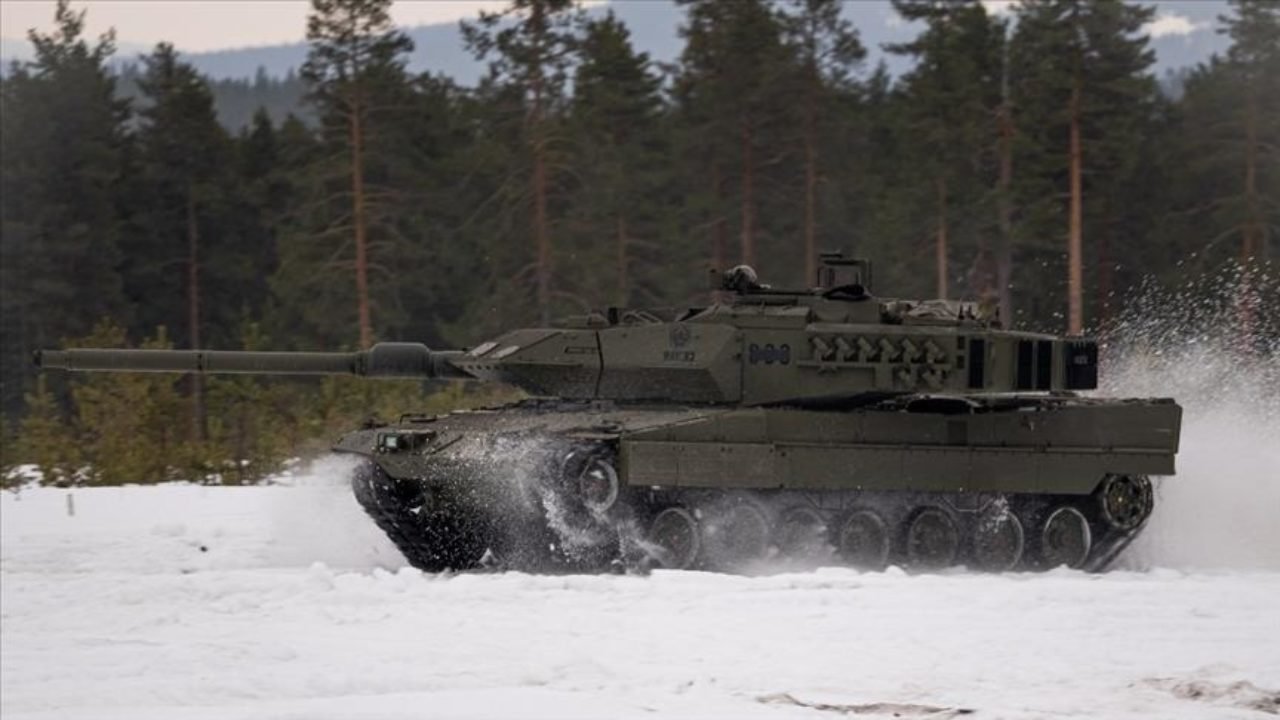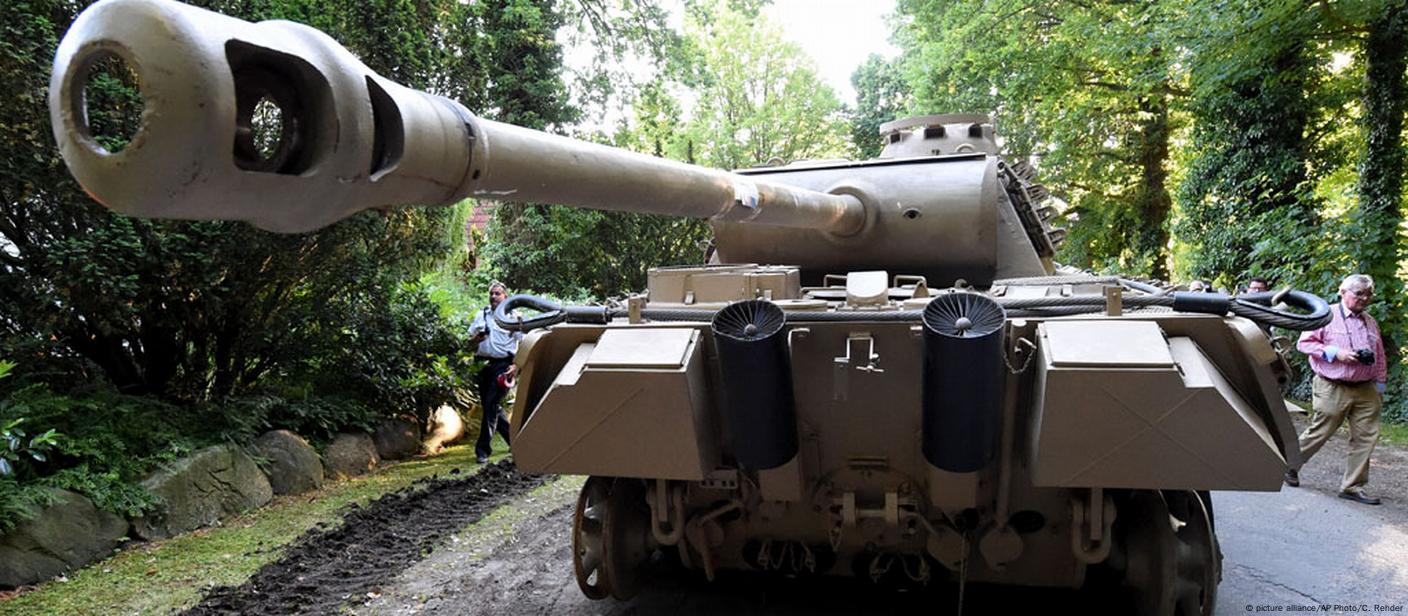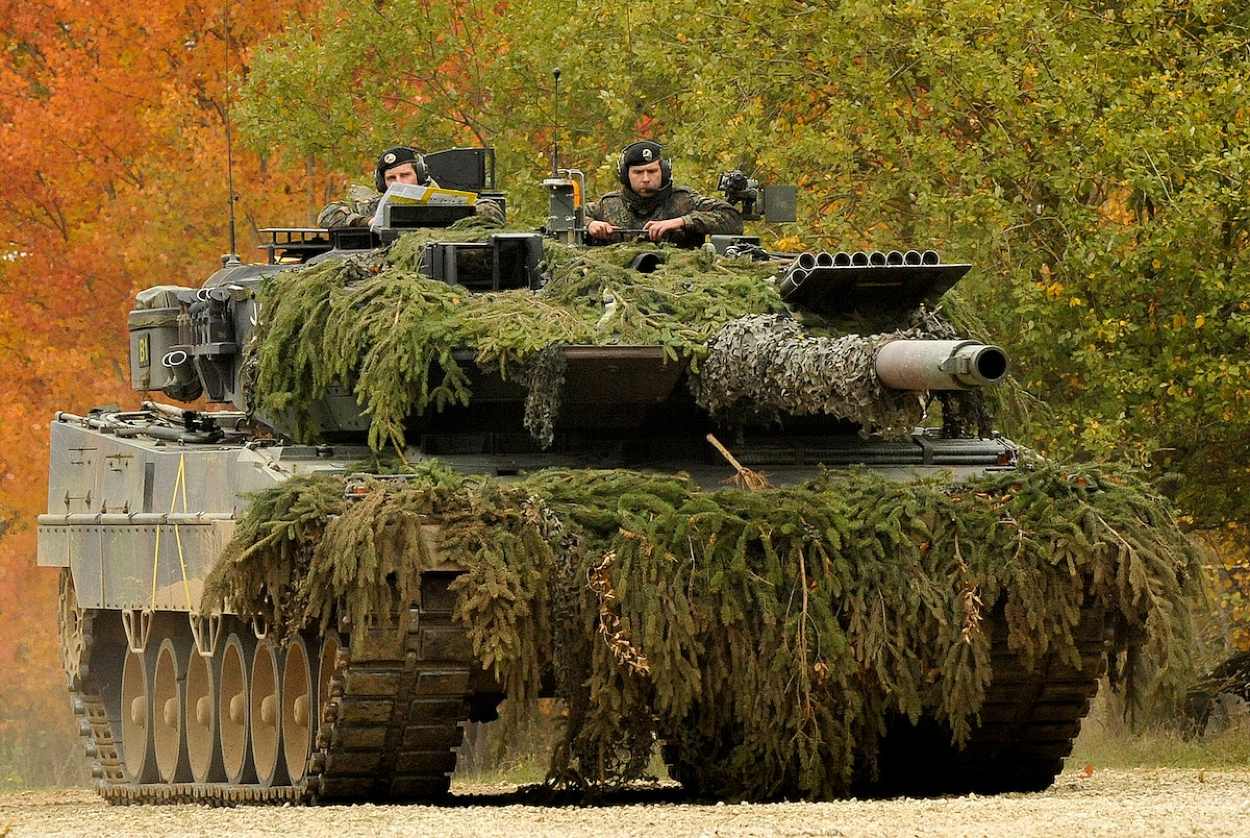Panther Tank Ukraine - Rheinmetall introduces new tank design: KF51 Panther The new German tank, unveiled at Eurosatory, is targeted at the export market.
EUROSATORI 2022: It's not often that a new tank, with tracks and all, appears on the market. Therefore, the launch of the KF51 Panther by Rheinmetall on the first day of the Eurosatory show in Paris was quite an exciting event.
Panther Tank Ukraine

The German company says the Panther KF51 (KF stands for Kettenfahrzeug, or tracked vehicle; the number indicates it belongs in the 50-ton-plus class) "is destined to be a game changer on the battlefield of the future." It sets "new standards" in "mortality, protection, reconnaissance, networking and mobility," the company said in a statement.
Ukraine Slams Germany For Failing To Send It Weapons
Jan-Philipp Weisswange, Rheinmetall's assistant PR manager, told Breaking Defense that the vehicle was designed with the company's own funds and not in response to customer requests. Weisswange said the tank was not designed as a candidate for the Franco-German Main Ground Combat System (MGCS) project, launched in 2012 to replace the Leopard 2 and Leclerc tanks, but rather for the export market.
Nevertheless, these two systems can provide an indication of where Rheinmetall can target potential sales. Leopard 2 users are Austria, Canada, Chile, Denmark, Finland, Greece, Hungary, Indonesia, Netherlands, Norway, Poland, Portugal, Qatar, Singapore, Spain, Sweden, Switzerland, Turkey, while the Leclerc is used by Jordan and the UAE.
The Panther chassis uses components from the Leopard 2 hull, but the turret is completely new. According to the company, the 59-tonne vehicle has a maximum range of around 500 km (310 miles).
The main armament is the 130 mm Rheinmetall cannon, designed for the Future Gun System (FGS) of the MGCS project. The FGS is loaded automatically from two revolver-type magazines each containing 10 rounds of insensitive ammunition compatible ammunition. According to the company, the FGS "allows a 50% longer kill range to be achieved [than 120mm] with an unmatched rate of fire due to its autoloader performance." It can fire kinetic energy rounds as well as programmable air burst projectiles and training rounds.
Ukraine Quietly Receives Tanks From Czech Republic To Support War Effort
The armament was supplemented by a 12.7 mm coaxial machine gun instead of the 7.62 mm coaxial gun that equips most main battle tanks today. At the rear of the turret roof is the company's new 7.62mm "Natter" remote-controlled weapon station.
The weapons are all electronically controlled and the computerized fire control system includes stable day/night sights for the commander and gunner. The laser range finder gives the Panther hunter/killer capabilities.
For self-protection, the Panther has a three-layer system: an active layer to protect against anti-tank missiles and kinetic energy threats; a reactive layer to neutralize the double-shaped charge round that may pass through it; and finally a passive layer to stop any remaining elements. It is also a peak attack protection system.

The tank was designed to be operated by three people. The commander and gunner are in the turret while the pilot is in the chassis. Additional space is available in the chassis as a command post or for drone operators or wing pilots. All crew members can operate sensors and weapons as each operator station can take over duties and roles from others while maintaining full functionality. Since the turret and weapons can be controlled from an operator's station in the chassis, this opens up the possibility of a future variant of the Panther with an unmanned turret - or even a version that will be fully controlled remotely.
German Chancellor 'stalling On Heavy Weaponry To Ukraine'
In fact, the Panther will probably change its place a bit as it moves forward. Rheinmetall stressed that it wants operators, maintainers, logistics and procurement professionals "from all current and future user countries to play an active role in shaping the future of the vehicle." Six months since the start of Russia's war in Ukraine, the defenders have demonstrated their dominance of Western-supplied weapons systems. However, with a dwindling inventory of armored vehicles, the Ukrainian army was unable to fight and exploited the holes its cannons punched in the Russian occupation forces. So far, Western governments have refused to supply Ukraine with Western-designed tanks and infantry fighting vehicles (IFVs). But things are changing - and a new plan from Berlin will win over both sides of the Atlantic.
During the first week of the invasion, the West supplied Ukraine with tens of thousands of shoulder-mounted anti-tank and anti-aircraft weapons. This helped arrest and then relaunch the Russian advance on Kyiv. In May, Russia engaged in a campaign of attrition in the Donbas, using superior artillery numbers and large amounts of ammunition. Ukraine is facing a serious ammunition shortage. The battle for Kyiv is consuming a lot of reserves, and a concentrated Russian missile campaign has destroyed much of Ukraine's defense industry. Where Ukraine was once self-sufficient in the arms sector, it is now heavily dependent on support from the West.
The "artillery crisis" also forced the West to reconsider its arms supplies to Ukraine. There are too few stockpiles and production sites for Soviet-style artillery shells, and no production lines for shells for Ukraine's old Soviet-made multiple launch rocket systems. At the same time, Ukraine cannot use NATO standard grenades and rockets because it does not have weapons capable of firing them. The solution was as simple as it was effective: the West provided modern artillery; Ukraine adopted it. Ukraine still cannot outnumber Russia, but it is now able to put large swaths of occupied territory under pressure. Along with precision strikes on ammunition and fuel depots and command posts, this significantly affected the ability of Russian artillery units to throw their shells into Ukrainian defense lines.
Thus, Western weapons help prevent the defeat of Ukraine and increase the cost of the Russian war. But they are not enough to reverse the gains Russia has made over the past six months. Western governments must now accept a third "balance": after supporting Ukraine's urban defense struggle and strengthening its long-range offensive capabilities, they must equip its armed forces for maneuver warfare. Heavy armor will be important in this next phase of the war.
Rheinmetall Unveils New Tank Design: Kf51 Panther
As it became clear that Ukraine's defenses would withstand an initial attack and that Russia's failed Blitzkrieg would turn into a long war, the Ukrainian government and independent experts have called on Western governments to supply Kyiv with armored vehicles to allow troops to move under attack and liberate. occupied territory. Central and Eastern European countries quickly sent hundreds of Soviet-made tanks, IFVs and armored personnel carriers—equipment that Ukraine could use without much lead time. However, experts warn that even these stocks are limited and that the West should prepare for Ukraine's transition to modern NATO standard equipment in case it runs out of spare parts to repair and replace damaged kits. But Western partners have so far avoided supplying Western-made tanks and infantry fighting vehicles.
Meanwhile, the Biden administration has assembled successively larger aid packages, including increasingly sophisticated weapons, careful not to "encourage or enable Ukraine to attack beyond its borders," in the words of President Joe Biden. Other allies are also extending the scope of their support to Ukraine through training and equipment. Personally, this government representative expressed his willingness to move forward. If the West really does not want "Putin to get away with conquering the country or part of it with brutal military operations," as Chancellor Olaf Scholz continues to emphasize, its leaders must erase the red line on this shield.
So now it's time to take the next step. This should be a European initiative, led by Germany, to allow Ukraine to regain territory occupied by Russia.

In March, Kyiv requested 88 Leopard 1 tanks and 100 Marder-type IFVs from German industry. The Chancellery will eventually give approval, as it did for self-propelled howitzers and anti-aircraft tanks. But like the old Soviet vehicles transferred by Eastern Europeans to Ukraine, many spare parts are no longer mass-produced. Accordingly, the core of Berlin's new efforts is to create a European Leopard 2 user consortium. This will form and equip the Ukrainian armored brigade with about 90 such vehicles and ensure the availability of modern NATO-standard main battle tanks with scalable production capacity to Ukraine.
Eating 'american Pie,' S.korea Delivers 1st Shipment Of Black Panther Tanks & K 9 Howitzers To Key Us Ally In Europe, Poland
The Leopard 2 tank, first introduced in 1979 and upgraded several times since then, is in service in 13 European armies: Austria, Denmark, Finland, Germany, Greece, Hungary, Norway, Poland, Portugal, Spain, Sweden, Switzerland and Turkey. Together they have more than 2,000 vehicles across different variants and levels of readiness. The more countries donate tanks, the easier it is to share the burden of providing them. The same applies to stored spare vehicles, where only a few are in usable condition, while the rest require restoration. The more countries that share this effort, the more they can achieve with a low amount per country, and the cheaper it is to repair obsolete vehicles.
Variants 2A4 and 2A5 comprise more than half of these leopards. Although they do not represent the latest version
Diecast panther tank, lego panther tank, panther tank model kit, panther tank, panther tank model, remote control panther tank, panther tank ausf a, ww2 panther tank, panther rc tank, panther tank models, cobi panther tank, panther g tank
0 Comments